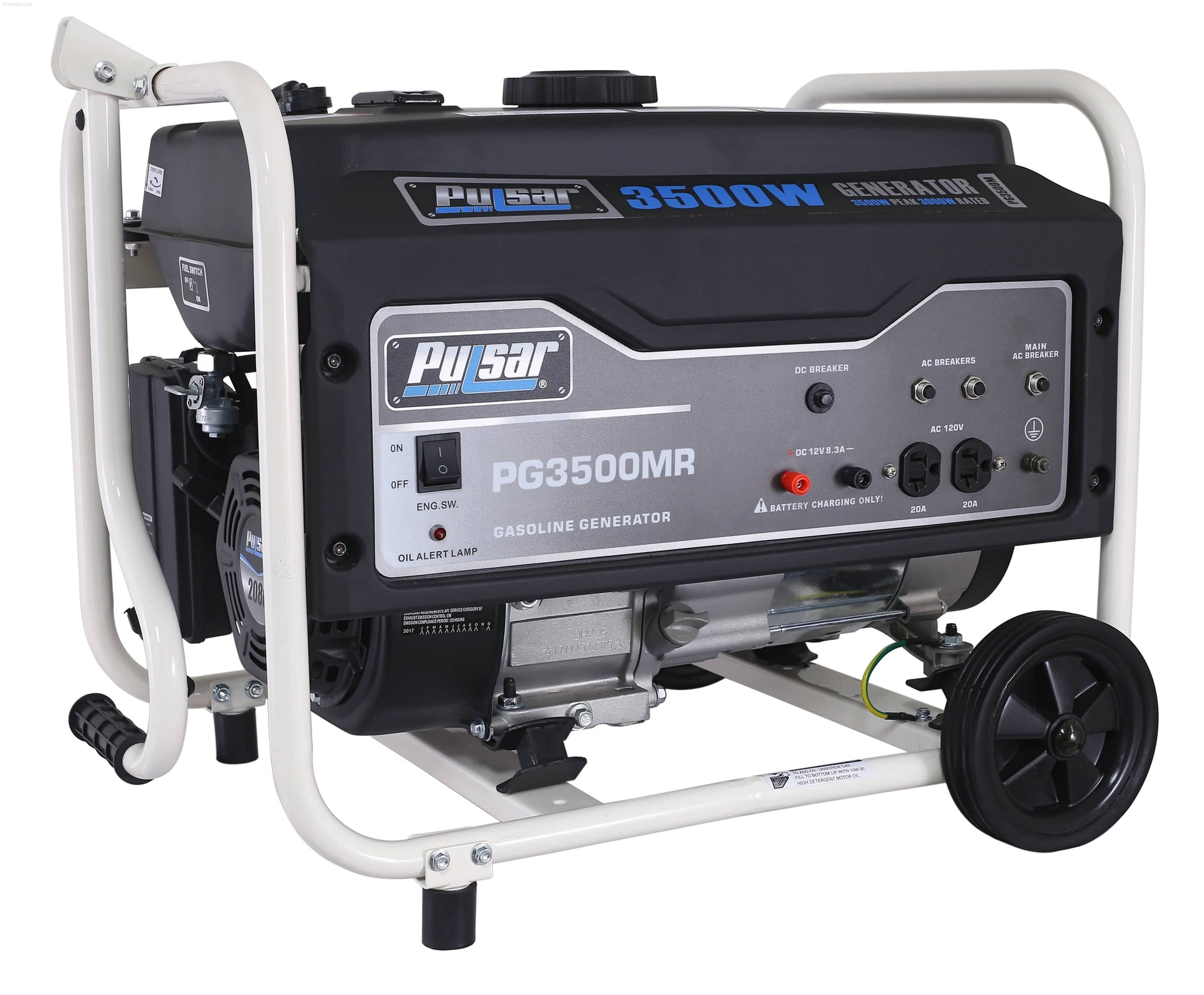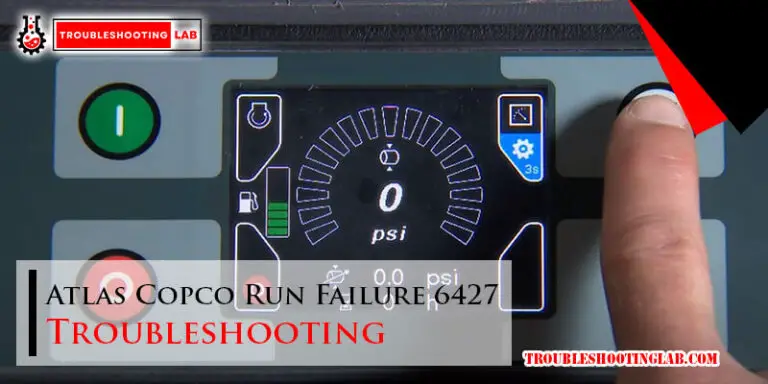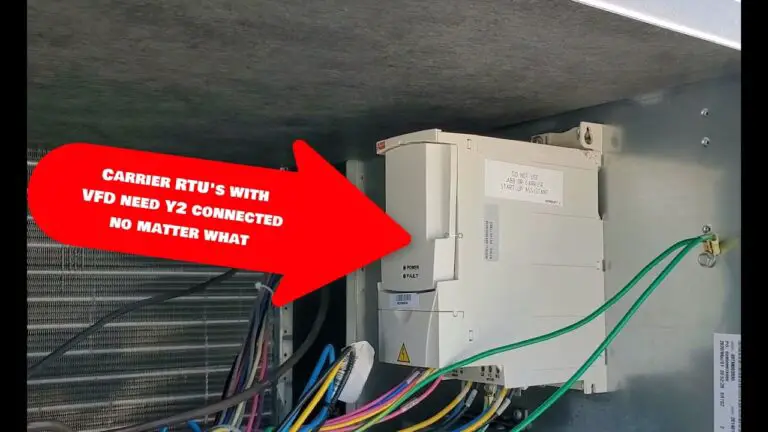Pulsar Generator Troubleshooting: Fix Common Issues Fast
Have you ever found yourself in a bind because your Pulsar generator suddenly stopped working? It’s frustrating, right?
Especially when you’re counting on it to power your tools, appliances, or even your home during an outage. The good news is, most generator issues can be fixed without a costly repair bill—if you know where to look. In this guide, we’ll walk you through common Pulsar generator problems and show you simple troubleshooting steps to get it running again.
Whether it’s a no-start issue, low power output, or something else, you’ll gain the confidence to tackle these hiccups head-on. Stick around, because the tips you’re about to learn could save you time, money, and a whole lot of stress. Ready to get your generator back in action? Let’s dive in!

Credit: www.youtube.com
Common Startup Problems
Starting up your Pulsar generator and facing issues can be incredibly frustrating, especially when you’re depending on it for power. Whether it’s a sudden power outage or a weekend camping trip, a generator that won’t start can throw your plans off track. Let’s dive into the most common startup problems and how you can address them quickly and effectively.
Engine Won’t Start
One of the most frequent issues is the engine refusing to start. First, check the basics: Is the generator’s ON/OFF switch in the correct position? It’s surprising how often we overlook this simple step.
Next, inspect the oil level. Many generators, including Pulsar models, have a low-oil shutoff sensor. If the oil is too low, the engine won’t start. Top it up with the recommended oil type and try again.
Still no luck? Pull out the spark plug. Look for carbon buildup or signs of wear. A dirty or damaged spark plug can prevent ignition. Clean it, or better yet, replace it with a new one.
Battery Issues
Some Pulsar generators rely on batteries for electric start functionality. If your generator won’t start, the battery might be the culprit. Start by checking the battery connections. Are they loose or corroded? Tighten them and clean any rust with a wire brush.
If the connections look fine, test the battery voltage using a multimeter. A weak or dead battery may need charging or replacement. Always keep a charged spare battery, especially if you’re in a remote area.
Don’t forget to periodically check your battery’s health, even when your generator is functioning well. Preventive maintenance can save you a lot of hassle.
Fuel Supply Problems
Fuel issues are another common roadblock to starting your generator. Is there enough fuel in the tank? It might sound obvious, but forgetting to refill is more common than you’d think. Always verify the fuel level before troubleshooting other areas.
Check the fuel valve and ensure it’s open. A closed valve will block fuel flow to the engine. Additionally, inspect the fuel lines for clogs or leaks. Over time, debris can accumulate and restrict the flow of fuel.
If your generator has been sitting unused for months, old fuel might be the issue. Stale fuel can gum up the carburetor, preventing the engine from starting. Drain the old fuel, clean the carburetor, and refill with fresh fuel.
Have you experienced any of these startup problems before? Troubleshooting might seem daunting, but tackling one issue at a time can get your Pulsar generator running smoothly again. Start with these steps, and you’ll often find the solution in minutes.
Power Output Issues
Experiencing power output issues with your Pulsar generator can be frustrating, especially when you rely on it during critical times. Whether you’re dealing with low voltage, unstable power, or a complete lack of output, understanding the root cause can save you time and headaches. Let’s break down these common problems and practical solutions you can apply today.
Low Voltage Output
Low voltage output often points to a problem with the generator’s alternator or voltage regulator. Check if your generator’s load is within its rated capacity. Overloading can cause a drop in voltage and strain the system.
Inspect the wiring connections for any loose or damaged wires. Even a minor issue can disrupt the power flow. If your generator has a voltage adjustment dial, ensure it’s correctly calibrated.
Have you been skipping routine maintenance? A dirty air filter or old spark plug can reduce efficiency, leading to lower voltage. Clean or replace these components as needed.
Fluctuating Power
Power fluctuations can damage sensitive equipment and create an unpredictable power supply. This issue often arises from a dirty carburetor or contaminated fuel. Drain the old fuel and replace it with fresh gasoline to see if it stabilizes the power.
Check the generator’s RPM (rotations per minute). If the engine speed is inconsistent, it can cause the power output to fluctuate. Adjust the carburetor or throttle settings to maintain a steady RPM.
Is your generator sitting on uneven ground? Believe it or not, this can affect performance. Place it on a stable, flat surface to improve power consistency.
No Power Output
A complete lack of power output can feel like a dead end, but don’t panic just yet. Start by checking the circuit breaker. If it’s tripped, reset it and see if that restores power.
Take a closer look at the generator’s outlets. Sometimes, dirt or debris can block the connection. Clean them carefully and test with a different device to rule out outlet issues.
If none of these steps work, there may be a problem with the generator’s internal components. A damaged stator or rotor could be the culprit. You may need to consult a professional for repairs if this is the case.
What steps have you already tried to fix your generator? Share your experience below and let others learn from your troubleshooting journey!
Engine Performance Troubles
Pulsar generators are reliable, but engine performance troubles can occur. These issues may disrupt power supply and lead to frustration. Understanding the root causes helps you resolve them efficiently. Below, we discuss common engine performance problems and how to address them.
Overheating Engine
An overheating engine is a common issue with generators. It may result from poor airflow or low coolant levels. Check the cooling system for blockages or leaks. Ensure the fan and vents are clean and free of debris. Regularly inspect the oil level since low oil can cause overheating. Use the recommended oil grade for your Pulsar generator.
Operating the generator in high ambient temperatures can also lead to overheating. Place the unit in a well-ventilated area. Avoid running it for extended periods without a break. Routine maintenance can significantly reduce the chances of engine overheating.
Unusual Engine Noise
Strange noises from the engine often indicate internal problems. Loose or damaged components may cause rattling or knocking sounds. Inspect the belts, bolts, and engine mounts for wear or misalignment. Tighten or replace any faulty parts immediately.
Grinding noises might suggest issues with the lubrication system. Check the oil level and quality. Replace old or contaminated oil promptly. Persistent noise could point to serious internal damage. In such cases, consult a professional technician for a detailed inspection.
Sudden Engine Shutdown
An engine shutting off unexpectedly can be alarming. This issue is often tied to fuel or electrical problems. Check the fuel tank to ensure there’s enough fuel. Inspect the fuel lines for blockages or leaks. Replace dirty or clogged filters to improve fuel flow.
Electrical issues, such as a dead battery or faulty connections, may also cause shutdowns. Test the battery voltage and clean the terminals. Inspect the wiring for damage and repair any exposed or broken wires. Regular servicing can help identify and fix potential problems early.
Electrical System Failures
When your Pulsar generator isn’t working as expected, electrical system failures are often to blame. These issues can stop your generator from producing power or cause it to shut down entirely. Understanding the common culprits can save you time, money, and frustration.
Tripped Circuit Breakers
One of the simplest electrical problems is a tripped circuit breaker. If your generator suddenly stops supplying power, check the breaker switch on the unit. It might have flipped due to an overload or a short circuit.
Resetting the breaker is easy. Turn it off, wait a few seconds, and flip it back on. If it trips again, the issue might lie with the device you’re trying to power or an internal fault in the generator.
Ask yourself: Are you running too many high-demand appliances at once? Try unplugging unnecessary devices to reduce the load.
Faulty Wiring
Loose or damaged wiring is another frequent issue. Vibrations from the generator’s engine can loosen connections over time, leading to inconsistent power delivery or no power at all.
Inspect the wires for visible damage, such as fraying or burns. Tighten any loose connections you find, but always turn off the generator first to avoid shocks.
If you spot severe damage, don’t attempt a DIY fix. Call a professional instead. A quick inspection now could prevent a costly repair later.
Damaged Control Panel
The control panel acts as the brain of your generator. If it’s damaged, you might notice flickering indicator lights, unresponsive buttons, or error messages on the display.
Check for signs of physical damage, like cracks or water intrusion. Sometimes, dirt buildup can also interfere with the controls, so gently clean it with a dry cloth.
Is the control panel unresponsive even after cleaning? You may need to replace it. Keep your generator covered when not in use to protect the panel from weather-related damage.
Electrical failures can seem daunting, but most are preventable with regular checks and maintenance. What step will you take today to keep your generator in top shape?
Fuel System Complications
The fuel system of a Pulsar generator is vital for its performance. Problems in this area can lead to poor efficiency or complete failure. Understanding common fuel system complications can help resolve issues quickly. Below are some key areas to check during troubleshooting.
Clogged Fuel Lines
Fuel lines carry fuel from the tank to the engine. Dirt or debris can block these lines, disrupting fuel flow. This blockage often causes the generator to sputter or fail to start. Inspect the lines visually for any kinks or buildup. Use a fuel line cleaner or replace the affected line for better performance.
Dirty Carburetor
The carburetor mixes air and fuel for combustion. Dirt or residue buildup can affect this mixture. A dirty carburetor often leads to rough operation or difficulty starting. Remove the carburetor and clean it thoroughly using carburetor cleaner. Reassemble it carefully to ensure proper functioning.
Wrong Fuel Type
Using the incorrect fuel type can harm the generator’s engine. Pulsar generators typically require gasoline with a certain octane rating. Always check the manual for fuel specifications. Drain and replace fuel if the wrong type was added. This ensures smooth operation and avoids engine damage.
Maintenance Tips
Proper maintenance ensures your Pulsar generator runs efficiently and lasts longer. Small routine checks can help prevent bigger issues down the road. By following some simple maintenance tips, you can keep it in top condition.
Regular Oil Changes
Changing the oil regularly keeps the engine running smoothly. Old oil collects dirt and loses its effectiveness over time. Check the oil level before every use or after 20 hours of operation. Use the type of oil recommended in the user manual. Drain the old oil completely, then refill it to the correct level. This prevents overheating and reduces engine wear.
Cleaning Air Filters
A clean air filter ensures proper airflow to the engine. Dirty filters block airflow, causing the engine to work harder. Check the air filter every 25 hours of operation or sooner if used in dusty areas. Remove the filter and gently clean it with soapy water or compressed air. Let it dry completely before reinstalling. Replace it if it’s too dirty or damaged.
Inspecting Spark Plugs
Spark plugs are vital for starting and running your generator. A worn or dirty spark plug can cause misfires or hard starts. Inspect it after every 100 hours of use. Remove the plug and check for signs of wear, carbon buildup, or damage. Clean it with a wire brush if dirty. Replace it if the electrode is worn or damaged. Always use the type specified in the manual.
When To Call A Professional
Sometimes, troubleshooting your Pulsar generator can feel like a never-ending process. While DIY fixes are great for minor issues, there are situations where calling a professional is simply the smarter choice. Knowing when to step back and bring in an expert can save you time, money, and frustration.
Recurring Issues
If your generator keeps facing the same problem despite multiple fixes, it’s time for professional intervention. For example, if your generator repeatedly stalls during operation even after you’ve cleaned the fuel lines or changed the spark plug, a deeper issue may be at play.
Professionals have specialized tools and knowledge to diagnose hidden problems, like a failing carburetor or electrical wiring fault. By addressing the root cause, you can avoid wasting resources on temporary fixes.
Major Component Failures
When critical parts of your generator stop working, it’s not something you want to tackle alone. Components like the alternator, voltage regulator, or engine are complex and expensive to replace. Attempting a DIY repair could lead to further damage.
For example, if your generator stops producing power entirely, there could be issues with the alternator or electrical output. A professional can test these components and replace them correctly, ensuring your generator runs smoothly again.
Warranty Considerations
Did you know that attempting repairs yourself could void your warranty? If your generator is still under warranty, it’s crucial to check the terms before diving into a DIY fix.
Manufacturers often require certified technicians to handle repairs for warranty claims. By calling a professional, you not only protect your warranty but also ensure the repair meets the manufacturer’s standards.
Knowing when to call a professional isn’t a sign of defeat—it’s a smart decision. Avoid repeated frustrations, protect your warranty, and let experts handle major repairs to keep your generator running efficiently.

Credit: www.homedepot.com

Credit: powergenusa.com
Conclusion
Troubleshooting your Pulsar generator can seem tricky, but it’s manageable. Start with basic checks like fuel and oil levels. Inspect the spark plug and air filter for dirt or damage. Ensure the generator is on a stable surface for proper operation.
Regular maintenance helps prevent common issues and prolongs its life. Always refer to the user manual for guidance. If problems persist, contacting a professional may be necessary. A well-maintained generator ensures reliable performance when you need it most. Stay proactive and keep your generator in top condition for peace of mind.





